- Make your own shadow table with a flashlight and lined paper. Mark measurements on table and perpendicular endpaper.
- Where do you need to put an object to make its shadow twice as big as the object?
- Is it the same for all sizes?
- Share challenges students created at the museum. Do they work on your shadow table?
- What patterns do students notice?
Activities
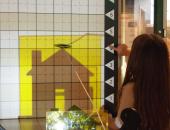
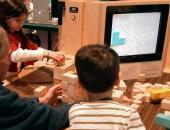
- Review the patterns students found, i.e., original number of blocks and number of blocks in a doubled form.
- What does “doubled” mean when discussing a 3-dimensional form?
- Brainstorm some ways this information would be useful in life outside math class.
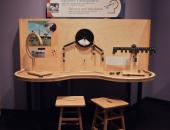
- Making a simple lever with a ruler and paper cups.
- Ask students to compare their rules about making the bars balance. What similarities do they find?
- In this activity, students use a lever. Have students make their own levers to investigate the ratios using load and distance from the fulcrum. Go to this site for instructions to build the lever http://tinyurl.com/makealever
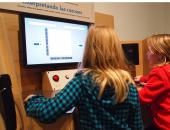
If students have experience with a piano, or if you can demonstrate with a keyboard or piano, they will notice the same pattern of black and white keys repeating sound patterns as the notes become higher or lower in pitch.
- What is the pattern?
- How is this like a musical scale?
- Investigate what frequencies humans can hear, and what kinds of pitch ratios make up harmonious sounds in music. http://www.musicmasterworks.com/WhereMathMeetsMusic.html
- A mathematical explanation of why some notes sound good to the human ear http://en.wikipedia.org/wiki/Harmony
- A short explanation about how harmony is defined, and history of harmony in Western music.
Explore how different ratios of notes sound.
Books
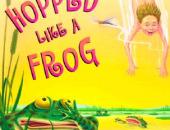
By the author of How Much is a Million and G Is for Googol: A Math Alphabet Book, this book gives students concrete examples of animal capabilities compared to a child’s experiences. E .g. “If you hopped like a frog... you could jump from home plate to first base in one mighty leap!” Challenge students to figure out the ratio.
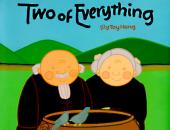
Based on a Chinese folk tale, this simple story introduces a “magic pot” that doubles everything that goes in. Good introduction to function tables for younger students.
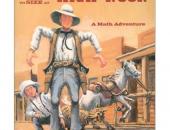
Set in the old frontier town of Cowlick, two barbers compete to drive each other out of town, using scale, ratios, and proportion. Grades 1 –middle school, introduction to scale.
Online resources

Resources for teaching math, includes on-line activities and lesson plans for K–12, with links to more math resources.

Frameworks for the Minnesota Mathematics and Science Standards, searchable by concept, are resources developed to help teachers translate Minnesota state standards into classroom practice. Each MN standard links to vignettes, misconceptions, resources for students, teachers and parents, assessment, differentiation strategies, correlations to both NCTM and Common Core Standards.
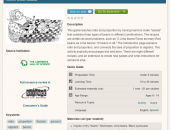
This game teaches ratio and proportion by having learners make "salads" that combine three types of beans in different combinations. The recipes are written as word problems, such as "2 Lima beans/Twice as many Red beans as Lima beans/ 10 beans in all."
A resource from the Lawrence Hall of Science, through the wonderful Howtosmile.org website.
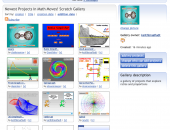
This is a gallery of Scratch projects that explore different ideas in ratio and proportion. Click on the project you like to explore the activity.
Scratch is a free application you can download from the MIT Media Lab for your Windows or Mac computer that lets you create animations, interactive programs, slideshows and even games.
